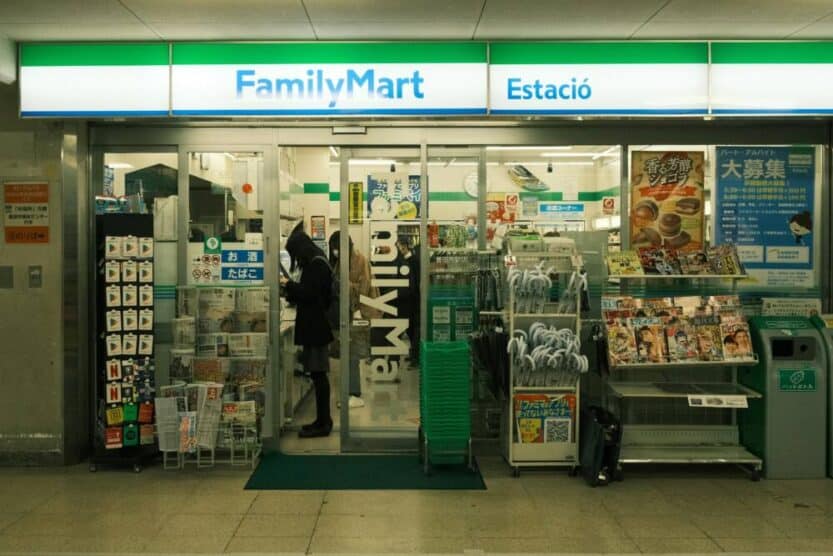ページ内容
Convenience Stores in Japan to End Sale of Print Magazines
A significant challenge for the print media industry in Japan has emerged as one in four municipalities lacks a bookstore. This situation underscores the reliance on convenience stores for access to printed materials.
Despite the abundance of convenience stores, their role as purveyors of magazines is about to change drastically.
Starting this spring, Tohan, a major Tokyo publisher, will take over the magazine distribution for the Family Mart chain, which operates approximately 16,000 branches, and for Lawson, which has around 14,000 locations nationwide. This transition follows a review by Tohan, which concluded that continuing the distribution of magazines to every store was economically unsustainable.
Consequently, distribution will cease for about 10,000 stores, representing approximately one-third of both chains’ total branches in Japan.
Impact of Decision on Communities

The changes in distribution raise concerns about access to print media, especially in rural areas. Notably, Lawson announced that it will stop magazine sales at 3,000 of its stores—about 20% of its locations—while Family Mart will do the same in many of its outlets.
This decision is tied directly to the declining demand for print media as more consumers turn to digital formats.
The decision to reduce distribution stems from various factors. Chief among these is the increased preference for digital media. Tohan also pointed to the high costs associated with storage and delivery as a significant burden affecting the viability of supplying all stores with print materials.
As a result, communities that primarily rely on convenience stores for their reading materials may find themselves increasingly isolated from access to magazines and other printed content.
Regulatory Challenges
The challenges do not stop with market demand; existing regulations also complicate the distribution of magazines to convenience stores. One key regulation mandates that weekly magazines must be available on shelves nationwide immediately upon their release, increasing the logistical complexities for deliveries to remote locations.
In addition, regulations prevent magazines from being shipped in the same vehicle as food items, which further adds to the transportation difficulties.
Addressing these regulations could contribute to a more sustainable model for print media distribution. Lawson is exploring options to adapt to this issue by enabling customers to order specific magazine issues through in-store kiosks, which would then be delivered to local branches for customer pickup.
Future of Convenience Stores and Print Media
In contrast to the changes at Family Mart and Lawson, 7-Eleven, the largest convenience store chain in Japan with over 21,000 branches, has no immediate plans to reduce its magazine offerings.
The chain recognizes the importance of providing readers with access to print media, particularly as fewer venues are available for purchasing physical copies. This commitment stands as a pivotal point for consumers looking to purchase magazines alongside everyday items like snacks.
Ultimately, the evolving landscape of print media distribution in Japan raises questions about accessibility and sustainability.
While some chains move away from magazine sales, others remain committed to meeting the needs of their customers.
The shift towards digital has undoubtedly affected traditional media consumption patterns, but the need for physical magazines persists in many communities.
As this situation develops, I will continue to monitor how these changes impact local access to print media and what strategies retail chains will adopt to adapt to these challenges.
The decisions made in the coming months could significantly shape the availability of magazines and other printed materials across Japan, especially in areas where options are limited.
また、読んでください。
日本のオンライン食料品店11選|日本のオンラインスーパーマーケット10選!
Best Japanese Convenience Store Food | The Ultimate Konbini Food Guide
伝統的な茶道や華道から、現代のファッショントレンドやポップカルチャーまで、日本のライフスタイルのさまざまな側面に焦点を当てて執筆しています。記事を通じて、日本への情熱を共有し、読者の皆さんに豊かで多様な日本文化の世界を垣間見ていただくことを目指しています。
日本のライフスタイルを理解する鍵は、伝統と革新のバランスを理解することだと思う。日本には何世紀にも遡る豊かな文化遺産がある一方で、常に進化し、新しいアイデアや技術を取り入れている国でもあります。
東京の最新ファッション・トレンドを知りたい人も、書道という古代の芸術を探求したい人も、私の文章はあなたを日本のライフスタイルの様々な側面を巡る旅へと誘います。私と一緒に、この魅力的な文化の美しさと複雑さを探求しましょう!





